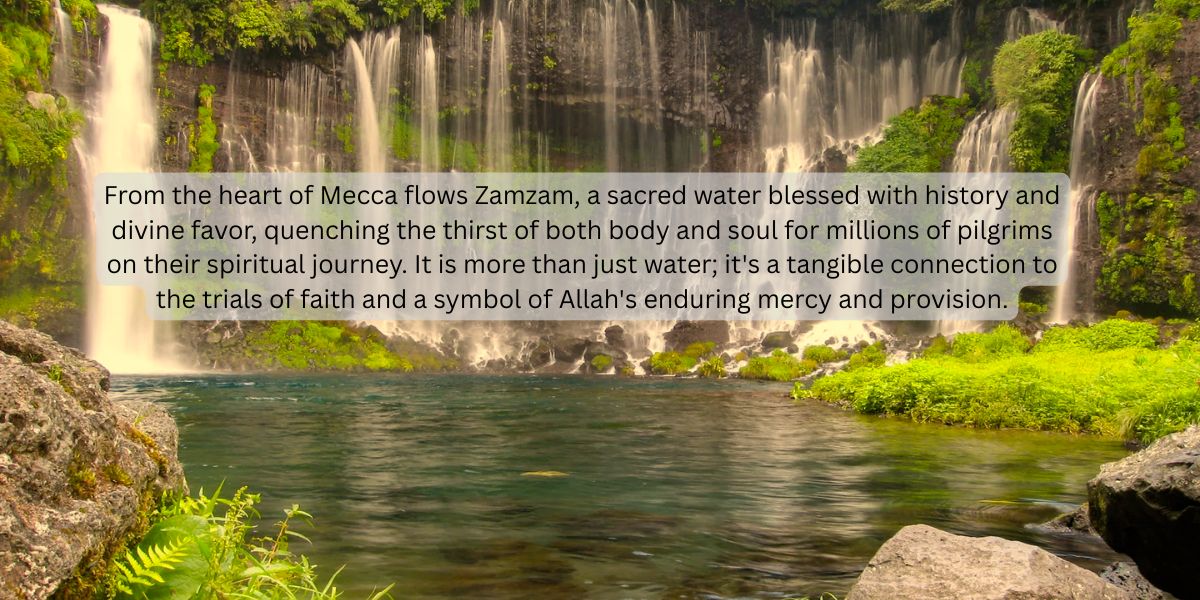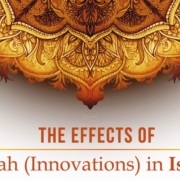The Story of Zamzam Water: A Wellspring of Blessings
As millions of pilgrims prepare for Hajj 2025, their hearts are filled with anticipation for the spiritual journey that awaits them in the sacred land of Mecca. Among the many blessings they will encounter, one holds a particularly revered place: the water of Zamzam.
This extraordinary water, with its rich history and unique properties, is intrinsically linked to the Hajj experience, quenching both physical and spiritual thirst for centuries. Its story is deeply interwoven with the very foundations of Islam and continues to be a source of wonder and blessing for every pilgrim who partakes in its sacred flow.
The Miraculous Origin: The Story of Hajar and Ismail
The origins of Zamzam are rooted in a pivotal moment in Islamic history, a testament to divine intervention and the unwavering faith of Prophet Ibrahim (Abraham), his wife Hajar, and their infant son Ismail (Ishmael). As the narrative goes, upon divine command, Ibrahim left Hajar and Ismail in the barren valley of Mecca. As their provisions dwindled, young Ismail cried out in thirst.
In her desperate search for water, Hajar ran frantically seven times between the hills of Safa and Marwa. Exhausted and heartbroken, she finally collapsed, turning to Allah in supplication. It was then, miraculously, that the angel Jibril (Gabriel) struck the earth with his heel (or wing, according to some narrations), and water gushed forth.
This well, which came to be known as Zamzam, not only saved Hajar and Ismail but also marked the beginning of the flourishing settlement of Mecca.

Prophet Muhammad’s Reverence for Zamzam: Hadithic Evidence
The well of Zamzam has been revered ever since its miraculous appearance. Over the centuries, it has been meticulously maintained and protected. The Prophet Muhammad (peace be upon him) himself held Zamzam water in high esteem, and this is evident in several authentic Hadith.
In a well-known narration recorded in Sahih Muslim, the Prophet (peace be upon him) said about Zamzam, “It is blessed, it is food for the hungry and a healing for the sick.” This Hadith highlights the dual nature of Zamzam, providing both physical sustenance and potential medicinal benefits.
Furthermore, Ibn Abbas (may Allah be pleased with him) narrated that the Prophet (peace be upon him) said, “The best water on the face of the earth is the water of Zamzam; it is a (kind of) food and a healing from sickness.” 1 This narration, found in At-Tabarani, further emphasises the exceptional status of Zamzam water in comparison to all other waters on Earth.
The Prophet’s consistent practice of drinking Zamzam and his statements about its virtues solidified its sacred status within Islam and made it an integral part of the pilgrimage rituals. Pilgrims throughout history have sought this blessed water, carrying it back to their homelands as a precious gift and a reminder of their spiritual journey.
Zamzam’s Role in the Hajj Rituals of 2025
During Hajj 2025, the consumption and distribution of Zamzam water will be a ubiquitous sight. Pilgrims will drink it to quench their thirst in the desert heat, use it for ablution before prayers, and fill containers to take back with them as a cherished souvenir for family and friends.
The Saudi authorities undertake immense logistical efforts to ensure that Zamzam water is readily available to the millions of pilgrims. Pumping stations, storage facilities, and distribution networks work tirelessly to provide a continuous supply of this blessed water at the holy sites and accommodations.
Key Aspects of Zamzam’s Importance during Hajj:
- Hydration in the Holy Land: Providing vital refreshment for pilgrims amidst the demanding physical aspects of Hajj.
- A Spiritual Thirst Quencher: Symbolising reliance on Allah and connecting to the story of Hajar’s perseverance.
- Emulating the Prophet’s Practice: Following the Sunnah by drinking and utilising this blessed water, as evidenced in numerous Hadith.
- Seeking Divine Blessings and Healing: Believing in its potential to bring about well-being, as mentioned in authentic Islamic traditions.
- A Treasured Memento: Serving as a sacred souvenir and a reminder of the Hajj journey’s blessings.
The Sensory and Emotional Experience of Drinking Zamzam
The experience of drinking Zamzam water during Hajj is often a deeply personal and moving one. Surrounded by fellow pilgrims from all corners of the globe, sharing in this sacred provision fosters a sense of unity and shared faith.
The taste of Zamzam, often described as unique and refreshing, becomes intertwined with the memories of prayers offered at the Kaaba, the steps taken between Safa and Marwa, and the profound sense of spiritual awakening that Hajj brings.
Logistical Efforts for Zamzam Distribution in 2025
The Saudi government invests significant resources in ensuring the efficient and widespread availability of Zamzam water for the massive influx of pilgrims during Hajj 2025. This includes advanced pumping technology, rigorous quality control, extensive storage facilities, and a well-organised distribution network across Mecca, Mina, Arafat, and Muzdalifah.
Carrying Zamzam Home: A Blessing Shared
For many pilgrims, bringing back Zamzam water is a cherished tradition. These precious containers are often shared with family and friends who were unable to make the pilgrimage, extending the blessings of the holy journey and serving as a tangible reminder of the pilgrim’s spiritual experience, all rooted in the Prophet’s (peace be upon him) high regard for this sacred water.
As the days of Hajj 2025 approach, the anticipation for experiencing the blessings of Zamzam water grows stronger for each pilgrim. It is a tangible link to the past, a source of physical and spiritual sustenance in the present, and a cherished reminder of the transformative journey undertaken in the path of Allah. The sacred flow of Zamzam continues to nourish the souls of believers, embodying the enduring mercy and boundless blessings associated with the holiest of pilgrimages.











Leave a Reply
Want to join the discussion?Feel free to contribute!